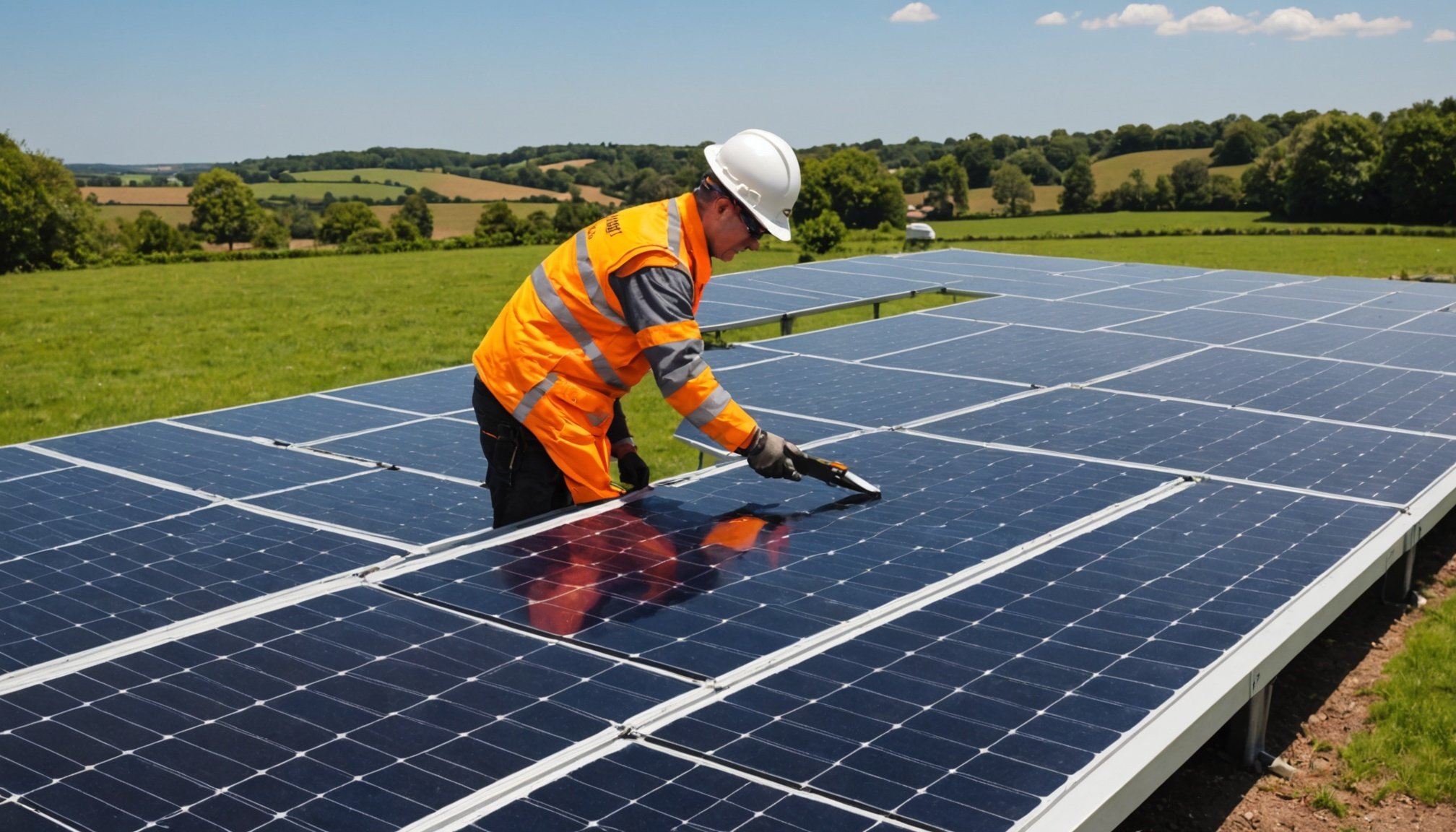Overview of Decommissioning Solar Panels
Decommissioning solar panels is a crucial aspect of maintaining environmentally responsible home solar systems. The process involves safely dismantling and recycling end-of-life solar panels to mitigate environmental harm.
Understanding the Importance of Safe Decommissioning
A voir aussi : Discover the Best Long-Distance Moving Companies for UK Home Relocations: Top-Rated Choices Explored!
Safe decommissioning is essential to prevent hazardous materials from harming the environment. Solar panels contain valuable and potentially toxic materials such as silicon, silver, and cadmium. If not properly handled, these substances can contaminate soil and water. Hence, an organised decommissioning process ensures both environmental safety and recovery of recyclable materials.
Risks of Improper Disposal
Improper disposal of solar panels carries several risks. It can result in leaching of harmful substances into the environment, posing health hazards. Additionally, failing to recycle the valuable components results in lost economic opportunities and a depletion of resources.
A lire aussi : Top Tips for Safely Storing Furniture During Your Move in the UK: A Comprehensive Guide
Summary of the Decommissioning Process
The decommissioning of home solar systems involves several steps:
- Assessment: Evaluating the condition of panels to determine suitability for recycling or reuse.
- Dismantling: Removing the panels and associated components from the installation site.
- Relocating Solar Panels: Transportation to recycling facilities where materials are separated and processed.
A systematic approach ensures safe, environmentally-friendly disposal while maximising resource recovery.
Legal and Regulatory Considerations in the UK
Understanding the UK solar regulations related to solar panel decommissioning is vital for compliance and avoiding legal issues. When planning to remove solar panels, it is crucial to be aware of the relevant legislation, which mandates obtaining specific permits before beginning the decommissioning process. The permits for solar removal can vary depending on the local council’s requirements but generally involve environmental assessments and waste management approvals.
Decommissioning laws require meticulous attention to detail. A failure to secure the necessary permits can result in significant penalties for non-compliance. These penalties are not only financial but can also affect future approvals for energy projects. Hence, adhering to these regulations is crucial—not only to avoid fines but to ensure environmental guidelines are respected.
Before commencing decommissioning, it is advised to consult with legal experts or local authorities to clearly understand which permits are necessary. This will help ensure all forms and standards are properly met, allowing for a smooth and compliant process. By doing so, stakeholders in solar energy projects can responsibly manage the end-of-life phase of solar panels, in line with UK regulations.
Step-by-Step Decommissioning Process
Embarking on the journey of decommissioning solar panels requires a structured approach. The process ensures that panels are removed safely and efficiently while minimising risks and optimising resource use.
Preparing for Decommissioning
The initial steps to decommission solar panels focus on preparation. Begin by conducting a thorough evaluation of your solar system’s current condition and performance. This assessment helps in identifying any concealed issues and provides a baseline for the decommissioning process. Collect all necessary tools and materials to ensure a smooth operation. Essential items may include safety gear, specialised equipment, and storage containers. Lastly, it’s vital to notify stakeholders, such as energy suppliers, to apprise them of your intentions and ensure compliance with relevant protocols.
Shutting Down the System
Safe solar removal involves meticulously shutting down the system. Begin by safely disconnecting the solar panels from the electrical supply to prevent accidental electrical discharge. Identify and disengage any monitoring systems to avoid tampering and data loss. During this phase, it’s crucial to ensure the safe handling of components to maintain their condition for potential future use or recycling.
Physical Removal of Panels
The physical removal of panels requires expertise to ensure safety and prevent damage. Employ techniques that facilitate safe removal from rooftops, using appropriate lifting and transport equipment. Adherence to recommendations for handling boosts efficiency and protects both the panels and the removal personnel.
Environmental Impacts and Disposal Methods
As solar energy gains popularity, understanding the environmental considerations tied to solar panel recycling is essential. Solar panels contain valuable materials like silicon, glass, and metals that can be reused, reducing the need for new raw materials and lessening landfill waste. Recycling solar panels not only conserves resources but also minimizes pollution, affirming its positive environmental impact.
The UK offers several disposal options aimed at responsible management of old panels. Local recycling facilities and specialized companies are equipped to process and recover materials efficiently. Emphasizing the use of these facilities can lead to significant sustainable benefits and mitigate potential environmental harm.
However, it’s crucial to note the presence of hazardous materials like cadmium and lead in solar panels. Safe handling practices are a must to prevent contamination. Professionals should dismantle panels to ensure safety during disposal. By adhering to recommended guidelines, hazardous exposure can be minimized, safeguarding both the environment and public health.
Overall, prioritizing solar panel recycling and adhering to established disposal methods significantly benefit the environment. Engaging in these efforts promotes a cleaner, more sustainable future while harnessing the potential of solar energy responsibly.
Reinstallation and Future Considerations
Relocating your solar system can be a daunting task, but reinstalling solar panels at a new location can be made smoother with the right approach. Firstly, ensure that you’re conducting a thorough site assessment of the new location. Evaluate factors such as sun exposure, shading, and roof integrity to maximize efficiency. It’s also crucial to secure the necessary permits early.
When it comes to decommissioning and reinstalling your system, opting for professional decommissioning services is advisable. Experts can proficiently manage the safe removal of panels, safeguarding them from damage. Additionally, they possess the expertise to reinstall your solar system, ensuring it operates optimally in its new setting.
Looking ahead, it’s essential to consider the long-term implications of relocating your system. Verify that the new site supports the anticipated energy output. Furthermore, assess whether any upgrades are needed to accommodate advanced technologies or increased energy demands. These considerations can save significant costs and optimize energy production in the future.
Here’s a quick checklist for relocating your solar system:
- Conduct a site assessment
- Obtain necessary permits early
- Engage professional services for decommissioning and reinstalling
By focusing on these points, you’ll ensure a seamless transition and continued energy efficiency.











